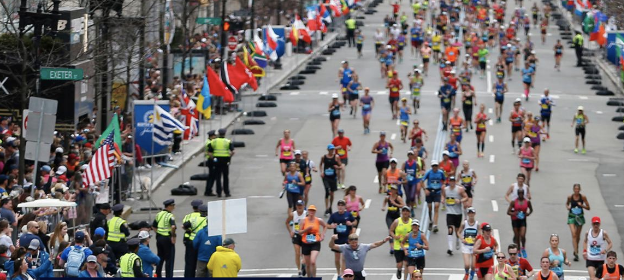
The Boston Marathon is an annual 26.2 mile race held on Patriot’s Day in Boston, Massachusetts. The course runs from Hopkinton in southern Middlesex County to Copley Square in Boston. Organized by the Boston Athletic Association since 1897, the Boston Marathon welcomes amateur and professional runners from around the globe, and over 500,000 spectators each year. The marathon is also known as one of the six World Marathon Majors, a title given to the largest and most renowned marathons in the world; the five other featured marathons take place in Tokyo, London, Berlin, Chicago, and New York City.
Extensive preparation is required to ensure success and health throughout such a rigorous race. Many adopt specific workout routines to better prepare themselves for the winding and hilly routes of the city streets of Boston.
“They say that Boston’s marathon is one of the toughest ones because of the hills, and so every Wednesday we do a hill work out in the boston commons with other members of the team,” Kyle Bianchi, a fifth year with graphic design major and art history minor, said. “Because [the marathon is] in the Spring, the training is tough since you have to begin around New Years, and it’s freezing! But I knew that if I could make it through the freezing runs, then I’d be ready for whatever came at me the day of the marathon.”
One example of a Boston-specific workout is the “2-4-2”, which is a routine that incorporates uphill and downhill tempo runs on a treadmill to simulate the terrain of the actual marathon. The “2×5 miles” workout simulates the third quarter of the race, which is known to be the hardest part of the marathon. By this time in the course, your body starts slowing down, so it is crucial to train beforehand in order to overcome this unavoidable challenge.
Another tactic to prepare for the race is to practice pacing so that you do not overexert your muscles in the beginning of the race, or end up burning out too early in the event. Starting the marathon too fast will only leave you tired by the mid-way point and leave you unable to finish the race.
Practicing long distance running through participating in other marathons is also an effective way of gauging personal ability and endurance, highlighting your weakest and strongest points during the 26.2 miles. As such, starting with shorter races and slowly building up to participate in the Boston Marathon is a thoughtful approach to training yourself to find success in athletic endeavors. In the days leading up to the marathon, runners will begin to curate their diets to ensure that they are in optimal condition. The Boston Marathon begins at 10 a.m., which is relatively later compared to other marathons, so runners have to prepare an effective fueling strategy by eating a more substantial breakfast and leaving enough time to digest the meal before the marathon begins. Some examples of appropriate breakfast items include oatmeal, bagels and peanut butter, and yogurt and granola.
The Boston Marathon has been an annual event for over a century, and it will continue to be an anticipated marathon for years to come.